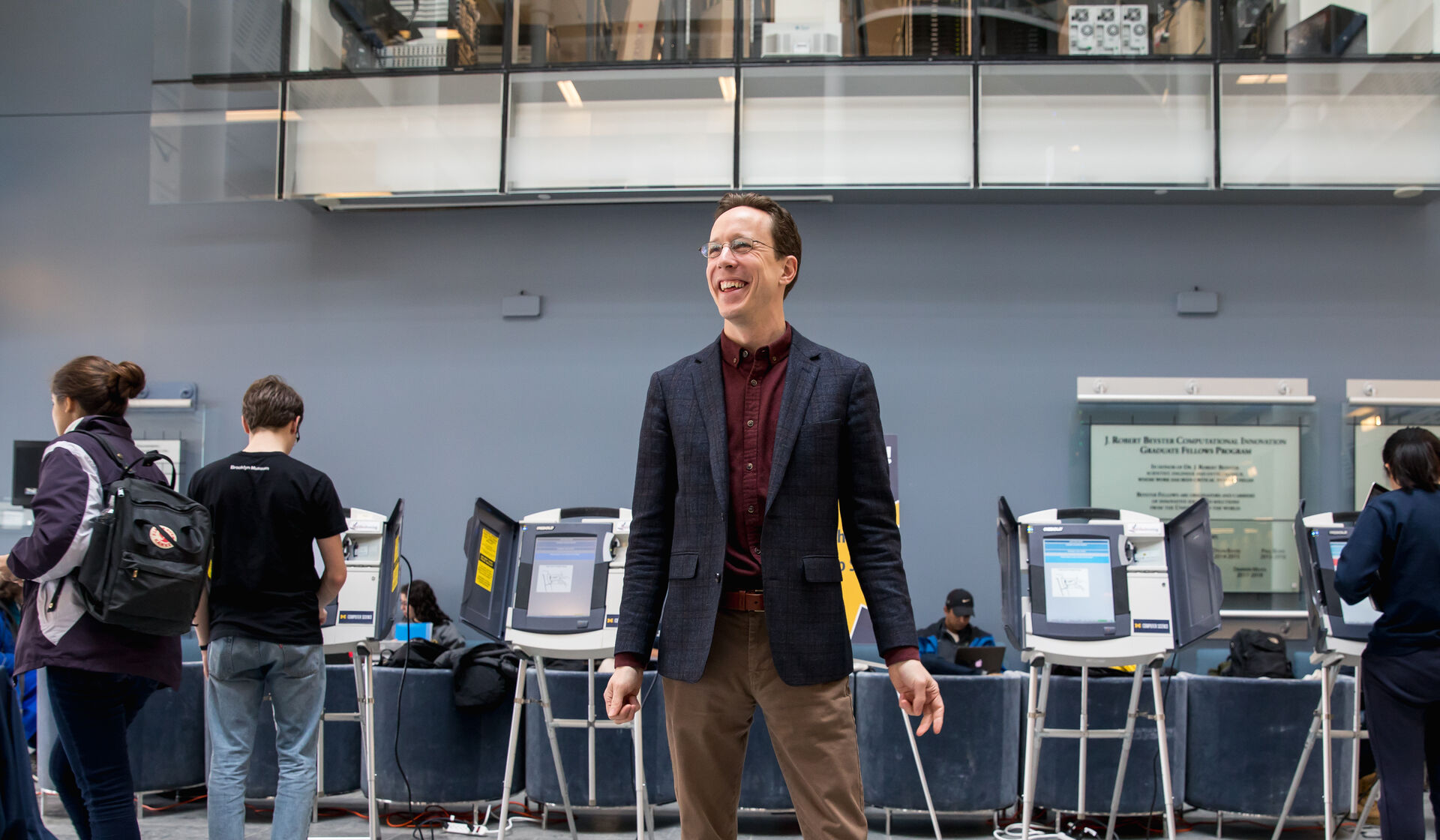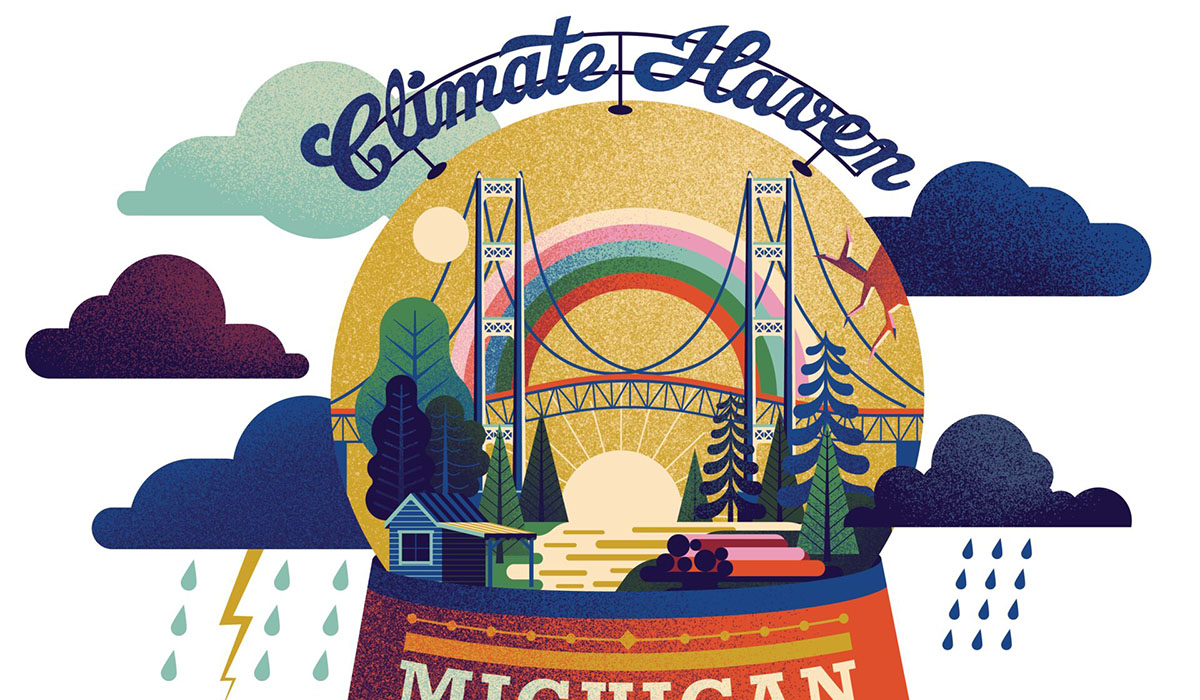Imagine a small plane parked on the Diag. That was the case in the 1970s when the University of Michigan Flyers would haul an aircraft onto Central Campus each fall to recruit new club members—thanks to an intrepid group of Wolverines.
Though the Michigan Aviators club has existed since 2014, when Dick Hoesli, ’73, and David Fradin, ’73, arrived on campus as freshmen in 1969, there was not a flying club for students. It was mere months after Neil Armstrong walked on the moon, and the two thought it would be fun to take to the skies. Given that the University’s department of aerospace engineering was the first four-year aeronautics degree program in the U.S., the lack of a flying club also seemed to them like a major oversight.
What’s more, U-M had a history of student-led recreational aviation. English-born U-M professor Herbert Sadler, chair of the department of naval architecture and marine engineering, sparked the creation of the student-run Aeronautical Society in 1910.
The Aero Club, as it came to be called, enjoyed lectures with international experts on aviation, conducted their own experiments and machine building, and competed in skills competitions, including the inaugural Intercollegiate Flying Association meet in 1929 at Mitchel Field in Long Island, N.Y. Judges of the contest included iconic pilots Amelia Earhart and Charles Lindbergh. (Side note: both of Lindbergh’s parents were U-M alumni.)
Michigan Alumnus magazine, in fact, reported regularly on the Aero Club’s competition results into the mid-1940s. With the onset of World War II, the club went on hiatus due to the war effort’s need for pilots, vehicles, and materials.
Jump to the Apollo 11 mission in July 1969, when all eyes were looking much farther off the ground than the sky. Despite this, a group of students still saw the need for a club focused on planes, not rockets. To that end, in October 1969, they incorporated the U-M Flyers. The Flyers took it upon themselves to procure aircraft, facilities, and training. Alongside Hoesli and Fradin, the earliest roster included Ron Levy, ’72; David Gell, ’73, PhD’83; Loren Henke, ’72, MPH’74; John Dobson, ’65, PhD’71; Philip Stern, MS’70, PhD’71; and Patricia Cleary, a fellow student, who served as the club’s first instructor.

“We actually shared our first office with the Students for a Democratic Society in the basement of the Union,” recalls Fradin. The Flyers’ first liftoff point was a plot loaned from an Ann Arbor landowner. They then moved to Tecumseh Mills Airport, then to Willow Run, and presently operate out of Ann Arbor Municipal Airport.
Over the years, the flying club—which included U-M students, alumni, faculty, and staff—acquired a fleet of around 25 planes, including a ski-equipped Luscombe and a Decathlon in which aerobatic instruction was given.
After a while, the requirement that members be affiliated with U-M dissipated and the name was changed to the Michigan Flyers, though the majority of members did have some connection to the University. “It was a golden age for aviation,” says Fradin. “The low cost of fuel and surplus of World War II parts made training much more affordable.” Fradin estimates the group has trained over 4,000 pilots to date.
Though now retired, Hoesli went on to become a pilot for Fortune 500 companies. “It’s my aviation legacy,” he says of the Flyers. Alumni of the club also include pilots for the Blue Angels and national delivery companies.
Bruce Williams, ’78, MBA’82, says members now come from all over the Midwest but still have an instant bond. “We have Wolverines, Spartans, Buckeyes … you might meet an astronaut, a transplant surgeon, a Michigan football player, a restaurant owner, or someone who builds parts for NASA. They will help you on your journey to learn to fly.”
Gregory Lucas-Myers, ’10, is assistant editor of Michigan Alumnus.
Editor’s Note: This article has been updated to clarify that the Michigan Flyers currently operate out of Ann Arbor Municipal Airport.





